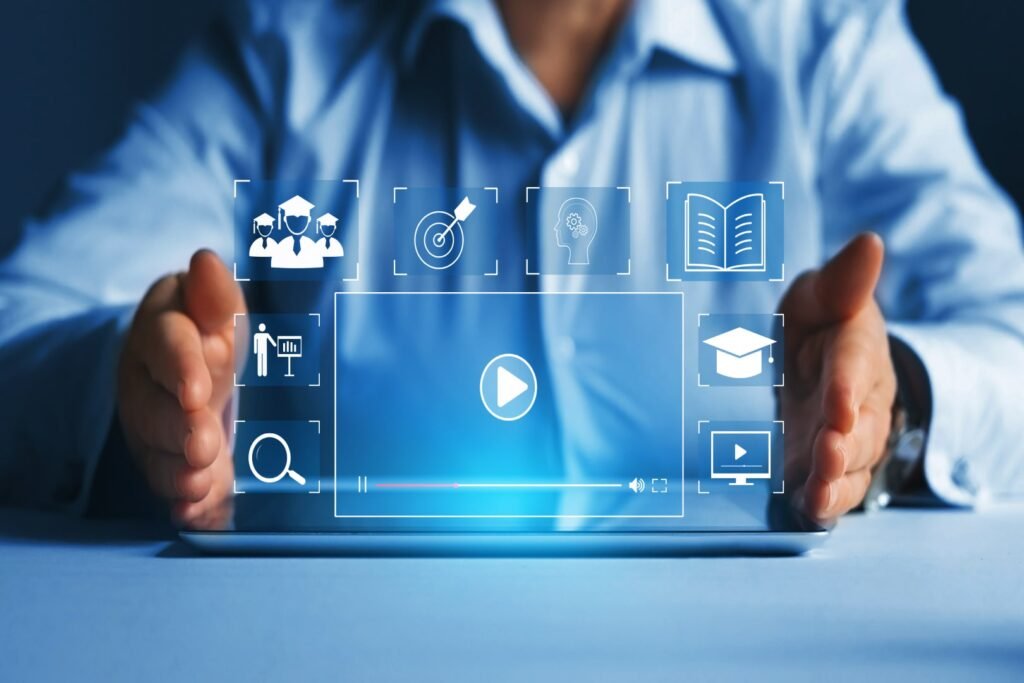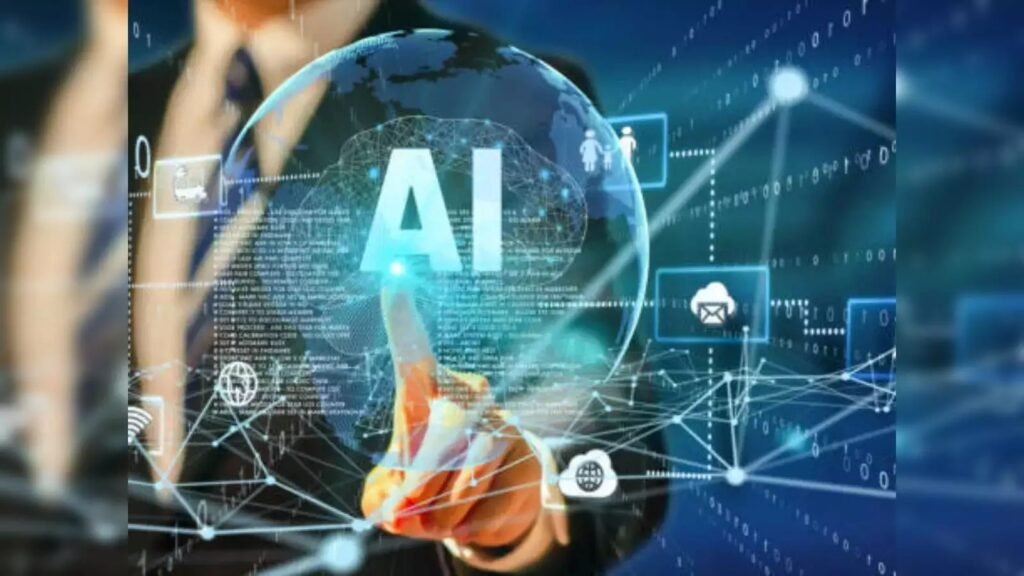In the realm of education, a quiet yet profound revolution is unfolding, driven by the advancements in artificial intelligence (AI). At its core, AI involves the creation of intelligent machines that can perform tasks typically requiring human intelligence. This includes learning, problem-solving, pattern recognition, and decision-making. The integration of AI into the education sector marks a significant leap forward, heralding an era where learning is not just a passive absorption of information but an adaptive and interactive experience.
The landscape of education is evolving rapidly with the infusion of AI technologies. Traditional classrooms, once bound by the limitations of physical space and uniform teaching methods, are now transforming into dynamic learning environments. AI-powered tools are providing educators and students with more personalized, engaging, and effective learning experiences. These technologies range from intelligent tutoring systems and virtual learning assistants to data-driven insights for personalized curriculum development.
This integration of AI in education is not just about the sophistication of new tools; it’s about fundamentally rethinking how education is delivered and experienced. AI is enabling a shift from a one-size-fits-all approach to a more tailored educational journey, recognizing and catering to the individual needs, strengths, and weaknesses of each student. As we stand on the brink of this educational transformation, it’s essential to understand how AI is reshaping learning environments, enhancing pedagogical methods, and paving the way for a future where education is more accessible, inclusive, and effective for learners around the globe.
In the ensuing sections, we will delve deeper into the various facets of AI’s role in education, exploring its benefits, challenges, and the immense potential it holds for shaping the future of learning.

Personalized Learning Experiences
The advent of AI in education has ushered in an era of personalized learning, a pedagogical paradigm shift from the traditional one-size-fits-all approach to one that tailors education to the individual needs, preferences, and learning styles of each student. This customization is a cornerstone of modern educational strategies, aiming to optimize learning outcomes by catering to the unique abilities and challenges of each learner.
AI’s Ability to Adapt to Individual Learning Styles and Needs
One of the most significant strengths of AI in education is its ability to analyze vast amounts of data on individual students’ learning behaviors. AI algorithms can identify patterns and learning styles, such as visual, auditory, or kinesthetic preferences, and adjust the content delivery accordingly. For example, a student who learns better through visual aids might receive more infographics and videos, while another who prefers reading may receive text-rich materials.
Moreover, AI can track a student’s progress over time, identifying areas of strength and weakness. This enables the system to provide targeted exercises to address specific challenges or advance skills where a student shows proficiency. Such adaptive learning systems respond in real-time, offering immediate feedback to students and continuously fine-tuning the learning process to maximize efficiency and effectiveness.
Examples of AI-Driven Personalized Learning Platforms
There are several notable examples of AI-driven platforms that exemplify this personalized approach:
- Adaptive Learning Software: Platforms like DreamBox Learning and Smart Sparrow adapt to a student’s learning pace and style, providing customized lessons and problems based on their performance.
- Intelligent Tutoring Systems: Tools like Carnegie Learning and ALEKS use AI to simulate one-on-one interaction with a tutor, offering personalized guidance and support in subjects like mathematics and science.
- Language Learning Apps: Duolingo and Rosetta Stone employ AI to tailor language learning experiences, adjusting the difficulty level and content based on the learner’s progress and retention rate.
- Reading and Literacy Tools: Applications like Newsela and ReadWorks use AI to adjust the reading level of texts to suit each student’s reading ability, helping improve literacy skills effectively.
Through these AI-driven platforms, education is becoming more adaptable, engaging, and aligned with individual learning needs, paving the way for a more inclusive and effective educational system. By leveraging the power of AI, educators can now provide personalized learning experiences at scale, a once-unattainable feat in traditional educational settings.

Automation of Administrative Tasks
AI’s role in education transcends beyond just enhancing the learning experience; it also significantly streamlines administrative tasks. This automation not only reduces the workload for educators but also allows them to dedicate more time and energy to the core aspects of teaching and interacting with students.
AI in Streamlining Administrative Duties
AI technologies are adept at handling routine and time-consuming tasks that traditionally consume a significant portion of educators’ time. Key areas include:
- Grading and Assessment: AI systems can automate the grading of multiple-choice and fill-in-the-blank questions. More advanced systems are even beginning to assess written responses and essays. Tools like Turnitin leverage AI to check for plagiarism, while other platforms provide instant feedback on students’ work.
- Attendance Tracking and Management: AI-powered systems can automate attendance recording, using facial recognition or other identification methods. This not only simplifies the process but also ensures accuracy in record-keeping.
- Scheduling and Timetabling: AI algorithms can optimize school timetables, taking into account various constraints and preferences, thereby simplifying a traditionally complex and time-consuming task.
- Learning Management Systems (LMS): AI integrated into LMS can track student progress, alert teachers to potential learning issues, and provide analytics on class performance, helping educators make informed decisions.
Impact on Teacher Workload and Efficiency
The automation of these tasks has a profound impact on teachers’ roles and efficiency:
- Increased Focus on Teaching: With AI handling administrative duties, teachers can focus more on teaching and engaging with students, leading to improved educational outcomes.
- Reduced Burnout: Teachers often face burnout due to the excessive workload. AI alleviates this by taking over repetitive tasks, thereby improving job satisfaction and teacher retention.
- Enhanced Personalization and Intervention: Freed-up time allows teachers to concentrate on personalized instruction and intervene where students struggle, fostering a more supportive learning environment.
- Professional Development: Teachers can utilize the time saved to engage in professional development, learn new teaching methods, and stay abreast of educational innovations.
In essence, the automation of administrative tasks by AI is not just about efficiency; it’s about redefining the educator’s role and enabling a more student-centered approach to education. This shift represents a significant step towards an educational system where the focus is squarely on learning and development, supported by technology.
Enhanced Accessibility and Inclusivity
The integration of AI in education is playing a crucial role in making learning more accessible and inclusive, particularly for students who face unique challenges.
AI Tools Aiding Students with Disabilities
AI technologies are instrumental in providing tailored educational experiences for students with disabilities, offering them opportunities to learn in ways that suit their needs:
- Text-to-Speech and Speech-to-Text: AI-driven tools can convert text into speech and vice versa, aiding students with visual impairments or learning disabilities like dyslexia.
- Sign Language Interpretation: AI-powered applications can interpret sign language in real-time, helping hearing-impaired students better understand spoken language in classrooms.
- Customized Learning Environments: AI can create customized learning modules for students with special needs, adjusting the pace of learning and the complexity of information based on individual capabilities.
- Assistive Educational Tools: Tools like smart pens and AI-enabled educational apps can provide real-time assistance and support, making learning more interactive and engaging for students with disabilities.
Breaking Language Barriers in Education with AI
AI is also breaking down language barriers in education:
- Real-Time Translation Services: AI-powered translation tools enable real-time translation of lectures and educational content, making them accessible to non-native speakers.
- Language Learning Applications: AI-driven language learning apps offer personalized language learning experiences, adapting to the learner’s proficiency level and learning style.
- Multilingual Education Platforms: AI facilitates the creation of multilingual education platforms, allowing content to be easily translated and localized, thus catering to a global audience.
Interactive and Engaging Learning Tools
AI is transforming traditional learning environments into interactive and engaging spaces, enhancing the educational experience.
Use of AI in Creating Interactive Learning Environments
AI technologies are being used to create dynamic learning environments:
- Virtual Labs and Simulations: AI-driven virtual labs and simulations provide hands-on learning experiences in subjects like science, engineering, and medicine, without the constraints of physical labs.
- Interactive Educational Content: AI algorithms can generate interactive and adaptive educational content, making learning more engaging and effective.
Gamification in Education Through AI Technologies
Gamification, powered by AI, is another innovative approach:
- Educational Games: AI-driven educational games adapt to the skill level of the student, providing challenges that are neither too easy nor too difficult, thus maintaining engagement and motivation.
- Reward Systems: AI can implement sophisticated reward systems in educational software, providing incentives for students to achieve their learning goals.
- Feedback Mechanisms: AI-enabled gamified learning platforms can provide instant feedback, encouraging students to learn from mistakes and improve their understanding.
In summary, AI is not only enhancing the accessibility and inclusivity of education for all learners but is also revolutionizing the way students engage with educational material. These advancements represent a significant leap towards an education system that is more equitable, effective, and attuned to the diverse needs of its learners.
Data-Driven Insights and Progress Tracking
The application of AI in education extends to the realm of data-driven insights and progress tracking, a critical aspect for enhancing the learning and teaching process.
AI in Monitoring Student Progress and Predictive Analytics
AI’s role in monitoring and analytics involves:
- Student Performance Tracking: AI systems can continuously monitor students’ performance, providing real-time data on their progress. This includes tracking their understanding of concepts, assignment completion rates, and exam performance.
- Predictive Analytics: AI can analyze historical data to predict future learning outcomes. It can identify students at risk of falling behind, enabling early intervention. Similarly, it can foresee areas where students are likely to excel, suggesting opportunities for advanced study.
- Customized Feedback and Recommendations: Based on progress tracking, AI can provide personalized feedback and recommendations to students, helping them focus on areas that need improvement.
Tailoring Curriculum and Teaching Strategies Based on AI-Generated Insights
The insights generated by AI can significantly impact curriculum development and teaching strategies:
- Adaptive Curriculum: AI can help in developing a dynamic curriculum that adapts to the learning pace and style of students, ensuring that all students can benefit from the educational material.
- Strategic Teaching Approaches: Educators can utilize AI-generated insights to modify their teaching strategies, focusing on concepts that require more attention and adjusting their methods to suit the class’s overall learning profile.
AI in Teacher Training and Professional Development
AI is also revolutionizing teacher training and professional development, ensuring that educators are equipped to meet the challenges of modern educational environments.
AI Tools for Teacher Training and Skill Enhancement
AI-based tools for teacher training include:
- Virtual Teaching Assistants: AI-powered teaching assistants can help new teachers by providing suggestions and feedback on lesson plans, classroom management, and student engagement strategies.
- Professional Development Modules: AI can create personalized professional development modules for teachers, focusing on areas where they can improve or new pedagogical techniques they can learn.
Continuous Learning and Adaptability in Teaching Methods Facilitated by AI
The adaptability afforded by AI in teaching includes:
- Ongoing Learning: AI platforms can offer continuous learning opportunities for teachers, keeping them updated with the latest educational technologies and methodologies.
- Responsive Teaching Practices: AI-generated data can guide teachers in adapting their teaching practices in real time, responding to the changing needs and dynamics of their classrooms.
In summary, the integration of AI in data analysis, progress tracking, curriculum development, and teacher training is transforming the educational landscape. It empowers educators to deliver more effective, personalized, and adaptive education while fostering their professional growth in an ever-evolving digital world.
Challenges and Ethical Considerations
While AI in education presents numerous benefits, it also brings forth significant challenges and ethical considerations that need to be addressed.
Addressing Concerns of Data Privacy and Security in Educational AI Tools
The use of AI in education involves the collection and analysis of large amounts of personal data from students, raising concerns about privacy and security:
- Data Protection: Ensuring that student data is protected and not misused is paramount. This includes safeguarding against unauthorized access and ensuring data is used solely for educational purposes.
- Consent and Transparency: It is crucial to maintain transparency about what data is being collected and how it is being used. Obtaining consent from students or guardians, especially in the case of minors, is a fundamental ethical requirement.
- Compliance with Regulations: Educational institutions and AI tool providers must comply with data protection laws and regulations, such as GDPR in Europe and FERPA in the United States.
Mitigating the Digital Divide and Ensuring Equitable Access to AI in Education
The digital divide is a significant challenge in the widespread adoption of AI in education:
- Access to Technology: Ensuring that all students, regardless of their socio-economic background, have access to the necessary technology and internet connectivity is crucial for equitable AI implementation in education.
- Inclusivity in AI Design: AI educational tools should be designed to be inclusive, catering to diverse linguistic, cultural, and learning needs.
The Future of AI in Education
The future of AI in education is poised to be transformative, impacting how education is delivered and experienced.
Predictions on How AI Will Continue to Shape Education
Looking ahead, AI is expected to:
- Further Personalization: AI will likely advance to provide even more personalized learning experiences, adapting not just to academic needs but also to emotional and psychological factors that influence learning.
- Enhanced Teacher-Student Interaction: AI will enable teachers to spend less time on administrative tasks and more on meaningful interaction with students, enhancing the quality of education.
- Improved Accessibility: AI can play a significant role in making education more accessible globally, especially in remote and underserved regions.
The Potential of AI in Global Education Reform and Lifelong Learning
AI’s potential in education extends beyond K-12 and higher education:
- Lifelong Learning: AI will facilitate lifelong learning opportunities, allowing individuals to continue learning new skills and knowledge throughout their lives in a flexible and personalized manner.
- Global Education Reform: AI has the potential to be a great equalizer in education, offering high-quality learning experiences to students worldwide, regardless of geographical or socio-economic barriers.
As AI continues to evolve, it will undoubtedly shape the future of education in significant ways. However, addressing the accompanying challenges and ethical considerations is essential to harness AI’s full potential in creating a more inclusive, effective, and personalized educational landscape.

Conclusion
The integration of Artificial Intelligence (AI) in education marks a pivotal moment in the evolution of teaching and learning. This technological advancement is not merely an addition to the existing educational framework but a transformative force reshaping the very fabric of how education is delivered and experienced.
Emphasizing the Transformative Impact of AI in Education
AI in education is a game-changer. It brings about a personalized learning experience, making education more accessible and inclusive, and transforming the role of teachers into facilitators and mentors. The automation of administrative tasks and the provision of data-driven insights enable a more efficient and effective educational process. Furthermore, AI’s role in breaking down language barriers and enhancing global access to education positions it as a critical tool in the pursuit of educational equity.
The Necessity for Responsible Implementation and Ongoing Evaluation
As we embrace the benefits of AI in education, it’s imperative to approach its implementation responsibly. This involves addressing ethical concerns like data privacy, security, and the digital divide. Continuous evaluation and adaptation of AI tools are crucial to ensure they are used in ways that benefit and empower all stakeholders in the educational ecosystem – students, teachers, administrators, and parents alike.
References
To gain a deeper understanding of the role and impact of AI in education, the following scholarly articles, research studies, and expert opinions provide valuable insights:
- Luckin, R. (2018). “Machine Learning and Human Intelligence: The Future of Education for the 21st Century.” – A comprehensive exploration of AI’s potential in education.
- Holmes, W., Bialik, M., & Fadel, C. (2019). “Artificial Intelligence in Education: Promises and Implications for Teaching and Learning.” – Discusses the promises and challenges of AI in education.
- Zhu, Z.-T., He, B., & Di, Z. (2020). “Artificial Intelligence in Education: Recent Developments and Future Prospects.” – Provides an overview of recent developments in AI in education.
- Goel, A. K., & Polepeddi, L. (2018). “Jill Watson: A Virtual Teaching Assistant for Online Education.” – A case study on the implementation of an AI teaching assistant.
- Siemens, G. (2013). “Learning Analytics: The Emergence of a Discipline.” – Discusses the role of data and analytics in education.




